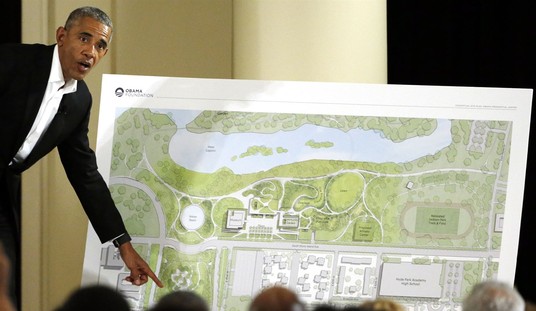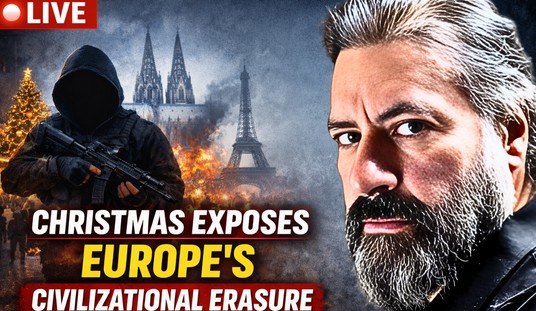Last winter rewrote the record books in the South and mid-Atlantic states, all of the records being for cold and snow.
During the first two weeks of 2010, a record long and deep cold wave invaded Florida — the longest and coldest penetration of Arctic air into Florida since 1940. West Palm Beach had an average low of 39 degrees.
In February, Washington D.C., Baltimore, and Philadelphia were buried under record amounts of snow. The federal government was paralyzed for days under 50 inches of snowfall in just a week.
Another storm closed schools and highways in Dallas, where a foot of snow in 24 hours set the local record.
Al Gore told us to expect the end of winter, yet to the amazement — and amusement — of many, some warmists explained that last winter’s record cold and snowfall was due to global warming! Apparently extremes of weather are a sure sign that global warming is dramatically mixing things up — and it’s even worse than we thought!
Record cold, record heat, drought, floods, everything that happens is consistent with man-made global warming theory. What a theory! All my life I believed that warmer made snow melt and colder made water freeze. I dressed accordingly.
As with all global warming disaster proclamations, these pronouncements are simply pronouncements, and that global warming could produce any kind of weather at all is a relatively new one. Only a few years ago alarmists were claiming a future of more heat waves, droughts, melting ice caps and glaciers. But the global temperature stopped rising after 1998, winters got colder and snowier, and the alarmists had to restructure their doomsday theory. The new spin — everything will happen! everything! — can’t possibly be wrong, and record cold is the result of warmer temperatures now, as the new theory predicts.
Reality, not theory, shows that there has been no increase in the variability of weather.
By far the highest levels of extreme warmth in recent history occurred in the 1930s, when more record high temperatures were recorded then at any time in the previous 130 years. The 1960s and 1980s saw the most record lows.
And the most recent decade, the 2000s? The lowest number of record high and record low temperatures since the 1880s! The 2000s were remarkable only in how unremarkable they were!
What about energy output? Alarmists warned that hurricanes will become more powerful as the Earth warms, but the World Accumulated Cyclone Energy Index reveals the opposite. Worldwide tropical cyclone energy levels are now lower than at any time in the last thirty years. Hurricanes are getting weaker, not stronger. And tornadoes? Decreasing since the 1970s.
We live on a round planet. The sun heats the world unevenly because it is round. The Earth is cold at the top and bottom, hot at the equator. Storms exist to transport heat away from the tropics, keeping global temperature in check. It is the mission of storms to balance the Earth’s temperature, and the strength of storms depends on the magnitude of the temperature difference between the poles and the equator. This difference is greatest in the winter, when the North Pole can be 50 to 60 degrees below zero while the tropics are in the 80s and 90s.
A good way to witness how the atmosphere reacts to this difference in temperature is to watch the speed of the jet streams. These powerful rivers of wind seven miles above the Earth will triple in strength from summer to winter — from about 60 miles per hour to 200 miles per hour or more. The same is true for winds on the surface. In the summer, the migratory storms move from west to east more slowly, with much less wind.
As temperature differences increase, storms work harder to transport heat around the world.
So, the warmists: they tell us that a warmer world will cause more severe storms, but there is no reason for this to happen. Global warming theory says the temperature changes will be most pronounced at the poles, much less so at the equator. As the temperature difference between the poles and the equator decrease, there will be less need for stronger storms.
We observe this weakening every year as the atmosphere transitions from winter to summer.
But should the small cooling trend we have witnessed since 2001 continue, we could see an increase in weather extremes in the future. A larger temperature gradient between the poles and the equator would mean the atmosphere would have to work harder to balance Earth’s temperature.
On the inside cover of Al Gore’s new book is a photoshopped hurricane off the east coast of Florida. The hurricane is rotating clockwise. This is impossible in the northern hemisphere — the Coriolis effect makes all large-scale weather systems rotate counterclockwise north of the equator. As with the threats of higher temperatures and more severe storms, Al Gore and the alarmists have it backwards.









Join the conversation as a VIP Member